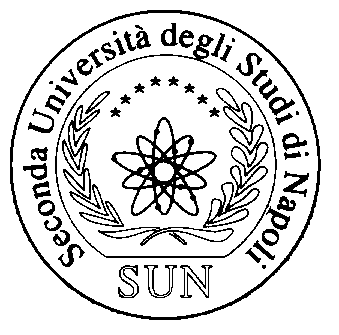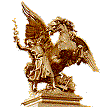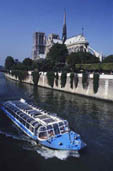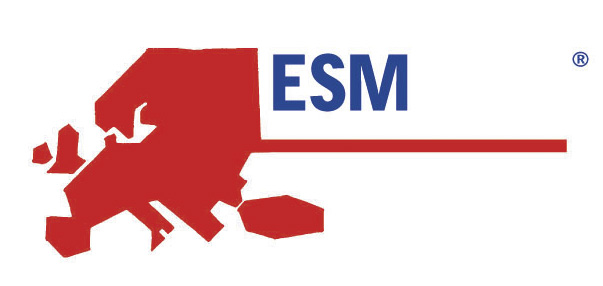
ESM©'2004
October 25-27, 2004 - UNESCO, Paris, France
Conference Venue
Conference Venue
CONFERENCE SITE
The conference will be held at UNESCO in Paris.

What is it?
UNESCO - the United Nations Educational, Scientific and Cultural Organization
(UNESCO) was founded on 16 November 1945. For this specialized United Nations agency, it is not enough to build classrooms in devastated countries or to publish scientific breakthroughs. Education, Social and Natural Science, Culture and Communication are the means to a far more ambitious goal : to build peace in the minds of men.
Today, UNESCO functions as a laboratory of ideas and a standard-setter to forge universal agreements on emerging ethical issues. The Organization also serves as a clearinghouse – for the dissemination and sharing of information and knowledge – while helping Member States to build their human and institutional capacities in diverse fields. In short,
UNESCO promotes international co-operation among its 190* Member States and six Associate Members in the fields of education, science, culture and communication.
(As of October 2003)
UNESCO is working to create the conditions for genuine dialogue based upon respect for shared values and the dignity of each civilization and culture.
This role is critical, particularly in the face of terrorism, which constitutes an attack against humanity. The world urgently requires global visions of sustainable development based upon observance of human rights, mutual respect and the alleviation of poverty, all of which lie at the heart of
UNESCO’s mission and activities. For more information about UNESCO
go to www.unesco.org
| UNESCO Headquarters is established in Paris. Offices are located in two places in the same area: 7, place de Fontenoy 75352 Paris 07 SP France 1, rue Miollis 75732 Paris Cedex 15 France UNESCO Participants will need to enter by the Place de Fontenoy |
 |
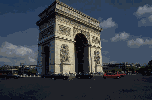 |
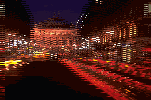 |
|
|
 |
|
History of Paris
 Paris was founded towards the end of the 3rd century BC on what is now the Île de la Cité by a tribe of Celtic Gauls known as the Parisii. Centuries of conflict between the Gauls and Romans ended in 52 BC, when Julius Caesar's legions took control of the territory. Christianity was introduced in the 2nd century AD, and the Roman party was finally crashed in the 5th century by the arrival of the Franks. In 508 AD, Frankish king Clovis I united Gaul as a kingdom and made Paris his capital, naming it after the original Parisii tribe.
Paris was founded towards the end of the 3rd century BC on what is now the Île de la Cité by a tribe of Celtic Gauls known as the Parisii. Centuries of conflict between the Gauls and Romans ended in 52 BC, when Julius Caesar's legions took control of the territory. Christianity was introduced in the 2nd century AD, and the Roman party was finally crashed in the 5th century by the arrival of the Franks. In 508 AD, Frankish king Clovis I united Gaul as a kingdom and made Paris his capital, naming it after the original Parisii tribe.
Paris prospered during the Middle Ages: In the 12th century, construction began on the cathedral of Notre Dame (work continued for nearly 200 years), while the Marais area north of the Seine was drained and settled to become what's known today as the Right Bank. The Sorbonne opened its doors in 1253, the beautiful Sainte Chapelle was consecrated in 1248 and the Louvre got its start as a riverside fortress around 1200.
Scandinavian Vikings (also known as Norsemen, or Normans) began raiding France's western coast in the 9th century; after three centuries of conflict, they started to push toward Paris. These conflicts gave birth to the Hundred Years War between Norman England and Paris' Capetian dynasty, eventually resulting in the French defeat at Agincourt in 1415 and English control of Paris in 1420. In 1429, a 17-year-old stripling called Jeanne d'Arc re-rallied the French troops to defeat the English at Orléans, and, with the exception of Calais, the English were expelled from France in 1453.
The Renaissance helped Paris get back on its feet at the end of the 1400s, and many of the city's signature buildings and monuments sprang up during the period. By the late 16th century Paris was again up in arms, this time in the name of religion. Clashes between the Huguenot Protestants and Catholic groups sank to their darkest levels in 1572 with the St Bartholomew's Day massacre of 3000 Huguenots in town to celebrate the wedding of Henri of Navarre (later, King Henri IV).
Louis XIV, known as le Roi Soleil (the Sun King), ascended to the throne in 1643 at the tender age of five and held the crown until 1715. During his reign, he nearly bankrupted the national treasury with battling and building. His most tangible legacy is the palace at Versailles, 23km (15mi) south-west of Paris. The excesses of Louis XVI and his capricious queen, Marie-Antoinette, led to an uprising of Parisians on 14 July 1789 and the storming of the Bastille prison - kick-starting the French Revolution.
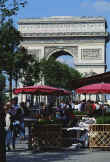 The populist ideals of the revolution's early stages quickly gave way to a Reign of Terror, wherein even a few of the original 'patriots' got uncomfortably cosy with Madame la Guillotine. The unstable post-revolution government was consolidated in 1799 under a young Corsican general, Napoleon Bonaparte, who adopted the title First Consul. In 1804, the Pope crowned him Emperor of the French, and Napoleon proceeded to sweep most of Europe under his wing. Napoleon's hunger for conquest led to his defeat, first in Russia in 1812 and later at Belgium's Waterloo in 1815. His legacy in modern France includes the national legal code, which bears his name, and monuments such as the massive neoclassical Arc de
Triomphe.
The populist ideals of the revolution's early stages quickly gave way to a Reign of Terror, wherein even a few of the original 'patriots' got uncomfortably cosy with Madame la Guillotine. The unstable post-revolution government was consolidated in 1799 under a young Corsican general, Napoleon Bonaparte, who adopted the title First Consul. In 1804, the Pope crowned him Emperor of the French, and Napoleon proceeded to sweep most of Europe under his wing. Napoleon's hunger for conquest led to his defeat, first in Russia in 1812 and later at Belgium's Waterloo in 1815. His legacy in modern France includes the national legal code, which bears his name, and monuments such as the massive neoclassical Arc de
Triomphe.
Following Napoleon's exile, France faltered under a string of mostly inept rulers until a coup d'état in 1851 brought a new emperor, Napoleon III, to power. In 17 years, he oversaw the construction of a flashy new Paris, with wide boulevards, sculptured parks and - not insignificantly - a modern sewer system. Like his namesake uncle, however, this Napoleon and his penchant for pugnacity led to a costly and eventually unsuccessful war, this time with the Prussians in 1870. When news of their emperor's capture by the enemy reached Paris the masses took to the streets, demanding that a republic be created. Despite its bloody beginnings, the Third Republic ushered in the glittering halcyon years of the belle époque.
The belle époque was famed for its Art Nouveau architecture and a barrage of advances in the arts and sciences. By the 1930s, Paris had become a worldwide centre for the artistic avant-garde and had entrenched its reputation among freethinking intellectuals. The flowering of that era was cut short by the Nazi occupation of 1940, and Paris remained under Germany's thumb until 25 August 1944. (The Allied forces that retook the city were spearheaded by Free French units in order to give the French the honour of liberating their capital.) After the war, Paris regained its position as a creative hotbed and nurtured a revitalised liberalism that reached a crescendo in the student-led 'Spring Uprising' of 1968. The Sorbonne was occupied, barricades were erected in the Latin Quarter, and some 9 million people nationwide were inspired to join in a paralysing general strike, drawing attention to their increasing dissatisfaction with the rigidity of French institutions.
During the 1980s, President François Mitterand initiated the futuristic grands projets, a series of costly building projects that garnered widespread approval even when the results were popular failures. Responses to the flashier examples, like the Centre Pompidou and the glass pyramids in the Louvre, have ranged from appalled 'mon Dieux' to absolute doting rapture; if nothing else, the projets invigorated dialogue about the Parisian aesthetic.
In the late 1990s, the city seized the international spotlight with two front-page events: the rumour-plagued auto-accident death of Princess Di in 1997 and France's first-ever World Cup victory in July 1998.
Meanwhile, the political party behind Jacques Chirac (France's president since mid-1995) lost the parliamentary elections in 1997 to a coalition of Socialists, Communists and Greens headed by current Prime Minister Lionel Jospin. In the 2002 presidential elections, far-right leader Jean-Marie Le Pen was highly successful in the first round of the election due to a low voter turnout. A subsequent strong show of support for Chirac - and a powerful slap in the face for Le Pen - gave Chirac a landslide victory, knocking Jospin out of the race in the process.
In 2001 Paris elected its first openly gay mayor, Bertrand Delanoe. He was stabbed in a hate crime in October 2002, but recovered successfully.
|
|
|
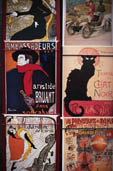 |
![]() PARIS TOURIST INFORMATION
PARIS TOURIST INFORMATION
The Basic Paris Glosssary. You'll need this to understand the very basic structure of the city and how it is organized. If nothing else, you should know these few things.... except for the Bateaux Mouche part.
 |
Telephone/Cellphone: There are fewer and fewer public phones in Paris, because everyone (including tourists) is using mobile/cell phones. You can read about some of the issues of using your cell phone in Paris here, as well as their solutions. |
 |
Airports: Paris has two main airports, and there are numerous options to get to and from them, including the Airport Shuttle one of the best deals around on either side of the Atlantic.... or Pacific. see more information below. |
 |
Hotels: There are thousands to choose from, and we have included people's comments to help you decide for yourself. Telephone for reservation, or make reservations online - with immediate confirmation - with a selection of several hundred, usually at reduced prices, by clicking here. For the bohemian, there are also foyers and hostels. More information can also be found on the hotel page for this conference. |
 |
The Métro: One of the world's best, even if it is among its oldest. In Paris, nothing is more than 500 yards from a Métro stop. Another site you can use for more information is this one. Or you can use this link. |
 |
Paris Visit: Get one of 12 different Métro passes online (days/zones/adult/child) to bring you around the City. These passes can be delivered to you at home before you arrive in Paris, or at your hotel in the City. |
 |
Museum Passes: Go to the front of the line everytime! Unlimited visits! There are 1, 3, and 5 day passes. Buy them online and have them delivered to you at home before you arrive in Paris, or at your hotel in the City. |
 |
Paris by Night: Tickets to Le Lido, Le Moulin Rouge, Crazy Horse, as well as romantic Seine River cruises, and night tours of the City, with or without dinner. You choose. Voucher issued directly online, no tickets needed. |
 |
EuroStar: Also known as The Chunnel, connects London and Paris via a tunnel under the English Channel. Its fast, convenient and superb! |
 |
Paris Calendar: Thankfully you don't have to do this to find out what's going on in town. |
 |
The Paris Weather and Climate page. Find out what the weather is today and likely will be in an around Paris during your visit. |
 |
HOW TO GET TO PARIS |
 |
For train connections from the airport:

Search for train times, prices and availability on the SNCF
website
Airport information:
Or find further information on travel to and from the Paris airports
HERE.
|
|

Train times:
Search for train times, prices and availability on the SNCF website
 |
If you arrive on the Eurostar or the Thalys
For information into Paris by motorway follow this link:

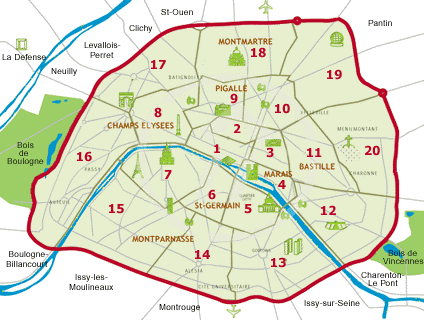
 In Paris itself you can use this link.
In Paris itself you can use this link.
or you can use this link.
The conference site is located in the 7th
arrondissement. (designated by 7 on the map)
 |
|
 |



















